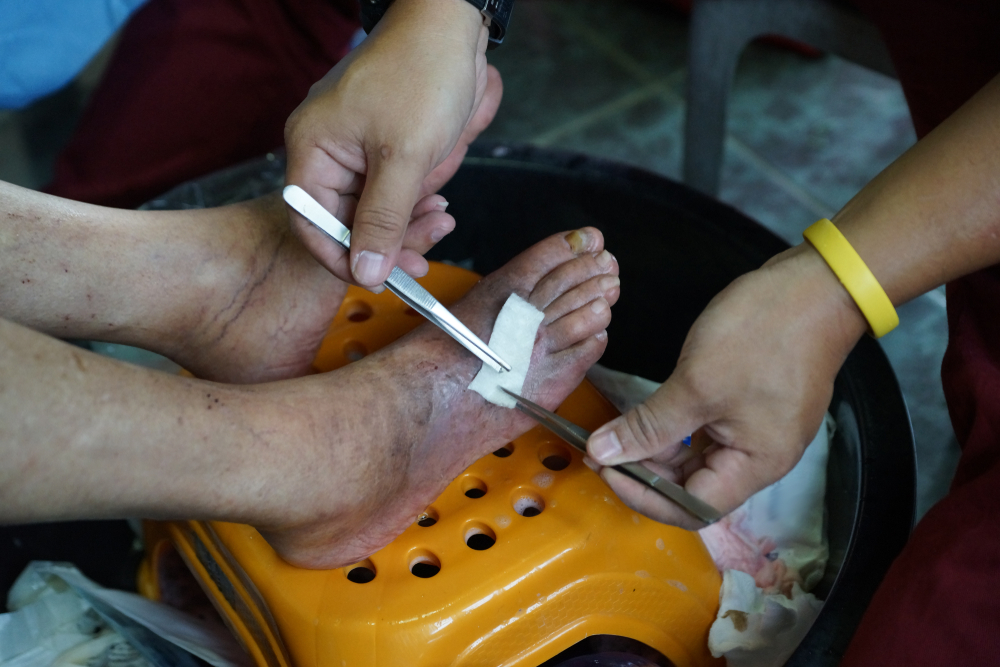With the continuous discovery of better evidence-based wound care methods, the management of acute and chronic injuries will continue to evolve. Consequently, wound care providers must stay up to date with new approaches and innovations to help optimize their practice. While the emphasis in wound care is on modern wound care techniques, there are some conventional methods all wound care professionals must be familiar with.
Why Is Wound Care Constantly Evolving?
The top priority for every wound care professional is to achieve optimal wound healing after managing their patients’ injuries. To reach this goal, wound care experts have to constantly update their knowledge and understanding of wound healing processes while employing the most effective therapeutic and palliative treatment protocols.
Scientists, clinical researchers, and other players in the wound care industry are constantly tweaking wound care science to optimize the healing process. As newer, more effective methods of patient surface, older methods are naturally rendered obsolete resulting in a continuum of wound care approaches.
Top Outdated Wound Care Practices
Regardless of the push for newer technological innovations in wound care, wound care professionals must have a basic understanding of conventional wound care practices. Depending on the healthcare setting in which wound care providers find themselves, some older wound healing approaches might still have a place in achieving injury resolution.
Some top outdated wound care techniques are listed below:
- Wet to dry wound dressings
- Whirlpool debridement
- Cytotoxic wound cleansers
- Empirical antibiotic use
- The use of ACE bandages in treating tissue edema
Wet-to-Dry Wound Dressings
Wound debridement is an integral part of wound care regardless of injury etiology. Wound debridement can be done in various ways including mechanical methods like the use of wet to dry wound dressings. This technique is largely outdated and has been replaced by more convenient methods with less distressing effects on affected patients.
Wet to dry wound dressings involve the application of moistened gauze on a wound surface which is then allowed to dry before removal. The idea behind this was to allow dead tissues to adhere to the dried dressings and then be peeled off from the wound surface.
However, this technique has been discontinued by most wound care professionals for two reasons:
- Non-selective tissue removal with both healthy granulation tissues and dead cells being peeled off
- Significant pain experienced by patients during dressing removal
Whirlpool Debridement
Whirlpool debridement represents another obsolete approach in treating acute or chronic wounds. This method of removing dead tissues from the wound site requires wound care personnel to submerge their patient limbs in water at temperatures between 92o to 96oF circulating at high velocity. This technique has been shown to only achieve partial wound debridement despite increasing the risk of wound site infection.
Cytotoxic Wound Cleansers
Local wound care involves wound cleansing as one of its critical stages. Wound cleansing can be done using cytotoxic antimicrobial agents however there have been continued calls for their abandonment due to their negative effects on tissue repair.
Many wound care experts have stopped using cytotoxic wound cleansers due to mounting evidence that they slow the wound healing process. Non-cytotoxic cleansers like normal saline are being advocated as an effective replacement for chemical wound cleansing agents with damaging side effects on wound tissue.
Indiscriminate Antibiotic Therapy
A major concern wound care clinicians are facing today is a higher rate of antimicrobial resistance among pathogenic microorganisms. Misuse and overuse of antibiotics encourage the development of resistant strains of bacteria creating a treatment nightmare in patients with infected wounds. The consensus now is to use antimicrobial agents only when there is a clear indication for their administration. Arbitrary use of antibiotics is being discouraged at all levels of wound care management.
The Use of Elastic Compression Bandages in Treating Tissue Edema
While some degree of tissue edema is expected during every wound healing process, excessive accumulation of fluid within wounded tissues will inhibit the wound healing process. Wound care professionals typically employ various methods to control tissue swelling and optimize the repair process.
The use of elastic compression bandages represents an edema control strategy that is now mostly outdated. These elastic bandages can be used to provide constant compression of affected limbs keeping fluid from accumulating within them. However, studies have shown them to be ineffective at providing even constant compression across limbs.
Should You Avoid Using Outdated Wound Care Techniques?
The short answer to this question is yes. Newer wound care techniques are being discovered and refined every day to improve wound healing outcomes in patients with acute to chronic wounds. These modern wound care approaches are designed to speed up tissue repair, diminish patient discomfort, and reduce the risk of complications like wound site infection and chronicity to minimum levels.
While it is important for wound care experts to have a broad knowledge of both conventional and newer methods of wound care, patient care must reflect the advances made in optimizing wound healing.



.webp)

.avif)